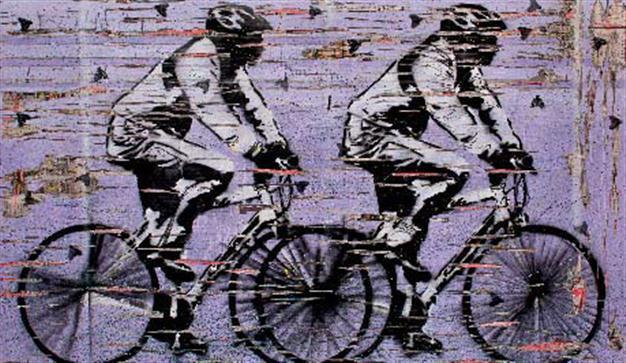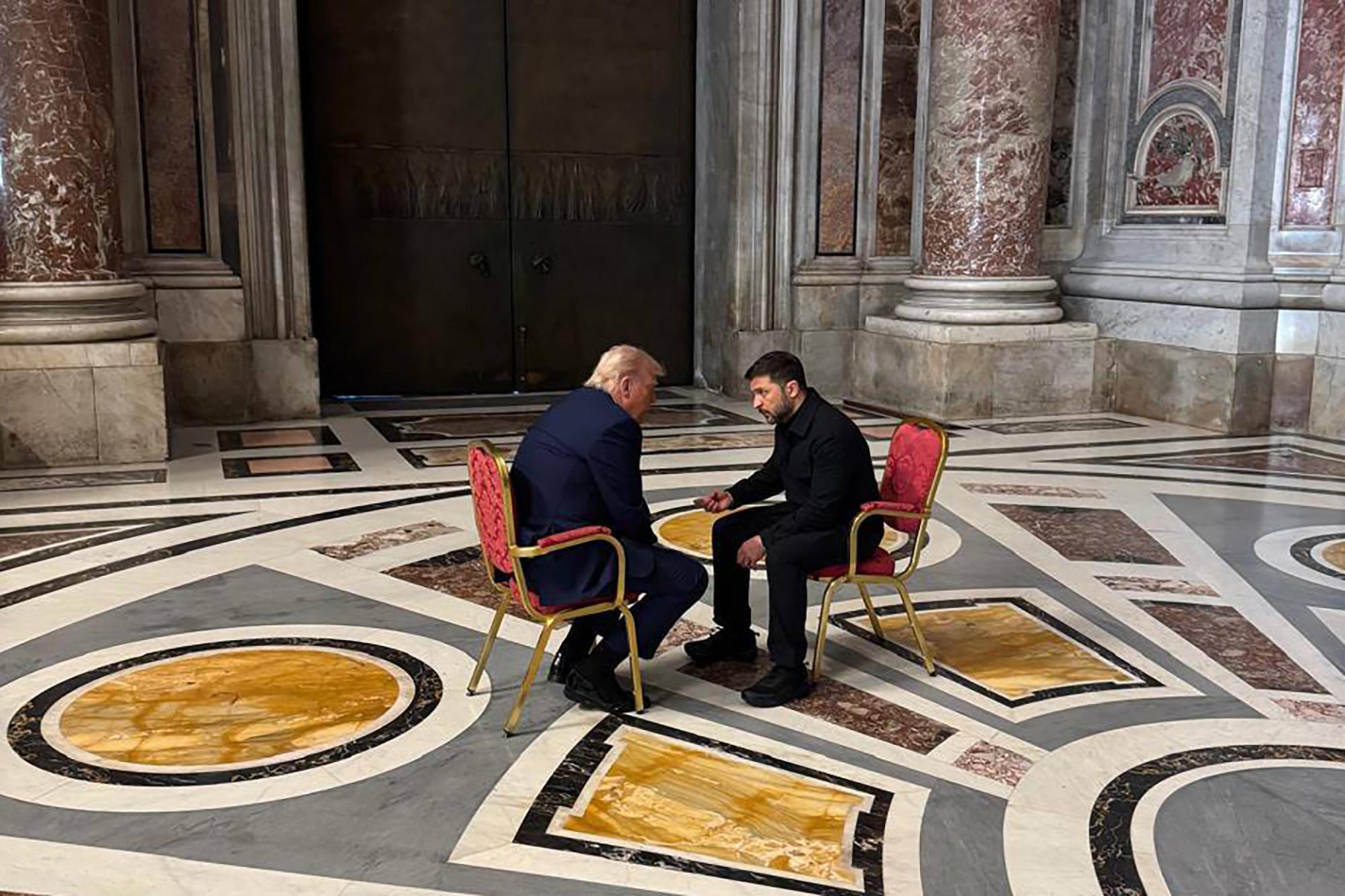Gallery walls turn into street walls in exhibition
ISTANBUL - Hürriyet Daily News

With his large-scaled works, young artist Olcay Kuş creates the feeling of wandering around the streets of a town. His works question the collective memory of a town and also draw the attention of the audience to the ordinary streets.
As an artist Olcay Kuş likes to use his canvas as a “street wall,” something everybody sees but never pays attention to. This is why he named his first solo exhibition “An Ordinary Day.”Taking place at Art ON the Gallery at Akaretler, the exhibition displays Kuş’s works, which look like graffiti and posters on street walls.
“I am inspired by the streets,” said Kuş. “That’s why I like to use my canvas as a wall.”
The exhibition, which will continue through Jan. 23, offers the audience a sense of walking on the street rather than visiting an art gallery. Kuş does this through using space and materials like newspapers, glues, sprays and stencils.
“Everyone reads or interprets my works differently. In fact I do not want to intervene in this interpretation but let people think whatever they want when they look at my works,” said Kuş.
It is not necessary to search for very deep meanings in Kuş’s works. “I am carrying things that we can see on the streets to the canvases. In an ordinary day, we can see everything on the street, and this inspires me. It is not a must to search for meanings or concepts in my works.”
With his large-scaled works, Kuş creates the feeling of wandering around the streets of a town. While his works question the collective memory of a town, he also draws the attention of the audience to the ordinary streets and lets them “look” more carefully, for the audience may have the ability to see more on the ordinary streets.
While he opens a new dimension to discover more about the streets, Kuş proves to the audience that he can also create his own techniques in a very unique way.
Another attention-drawing characteristic of Kuş’s works is how the “ordinary” figures of everyday life turn into metaphors that signify the hustle and bustle of urban life.
Despite their familiarity, the artist renders these figures into such representations with repetitions on canvas. His usage of “newspapers” reveals the details and shows the basic background of the works, which also creates another metaphor. With the works viewers associate what they see in daily life.
Changing the concept of gallery
Brian O’Doherty’s book “Inside the White Cube: the Ideology of the Gallery Space,” which was published in 1976, explored the intentions behind designing the modern gallery space into a neutral space, a white cube, which becomes part of the artwork, giving the exhibition space an underlying beauty. Even though he revealed the importance of the gallery space as not just a white cube but also a historical special construction that aims to “devour” the art, eyebrows were raised at the concept of the white cube. At the end of the day for many people, it is a space within four walls, and how it served to the favor of art was dubious.
As his works can create the sense of street walls, Kuş does something in the gallery that carries its concept to a new dimension.
Kuş also uses “gallery walls” as a street wall and expands the concept of gallery. The stencils of Kuş make the gallery more than a white cube that everyone visits with hesitation.
The wall of Art ON the Gallery hosts the stencil works of Kuş. The sense of “white cube” and the concept of “white cube” vanish with the natural wall paintings. This brings the viewer to question the concept of an art gallery and experience the evolution of this concept. There is no longer a “white cube” that exhibits only the works; there is more to discover in the gallery, and this is what Kuş shows to the audience.
















